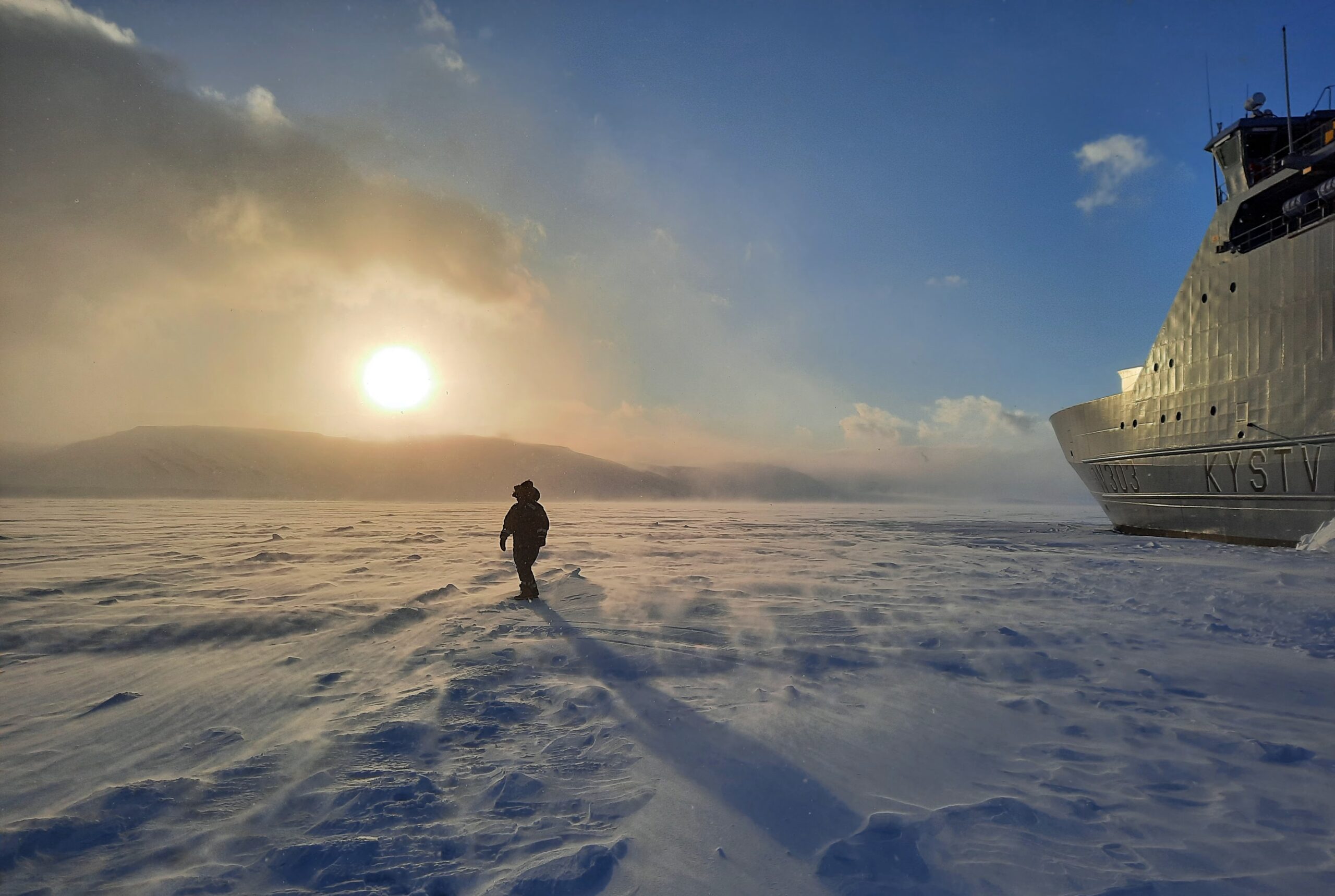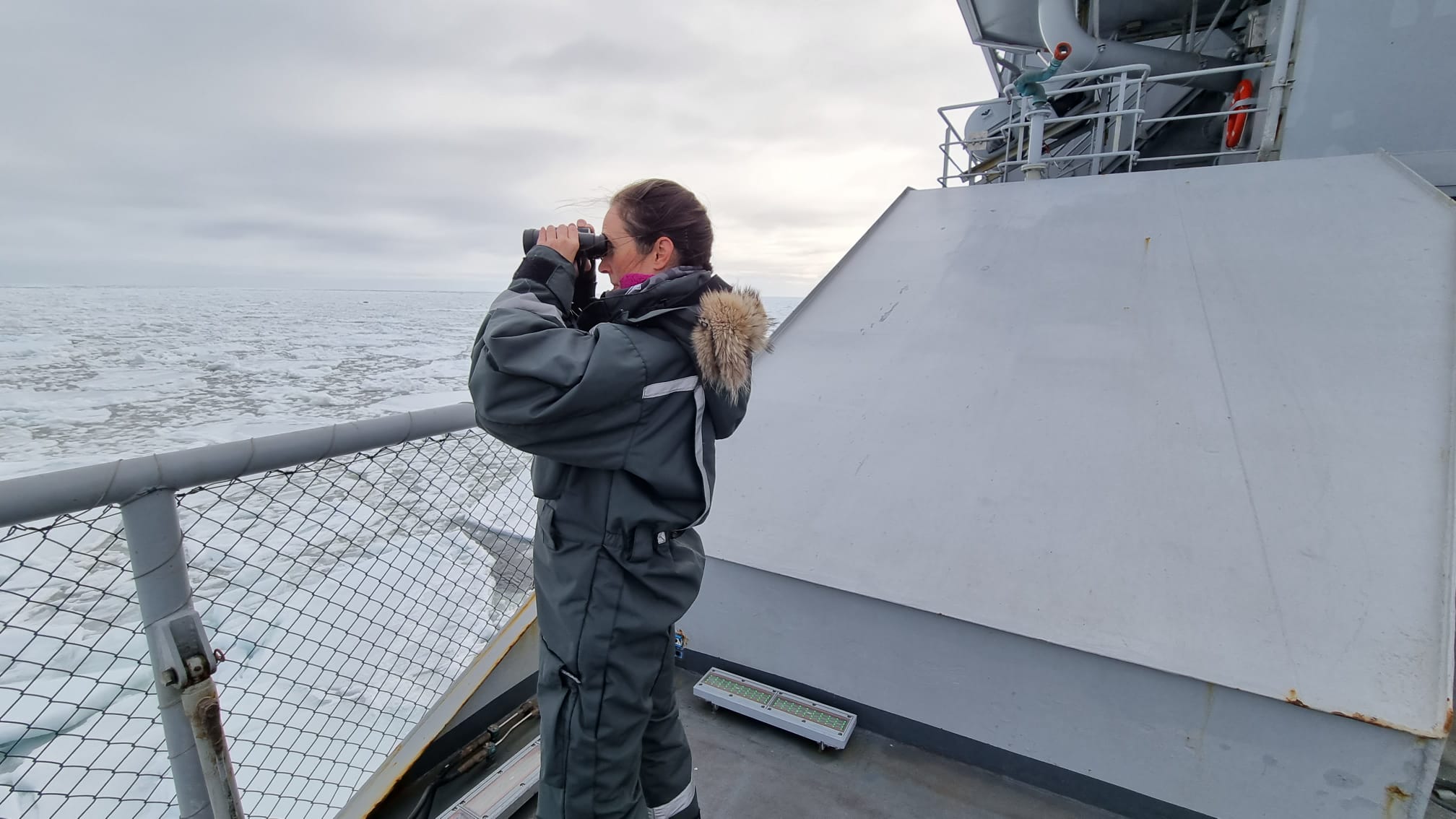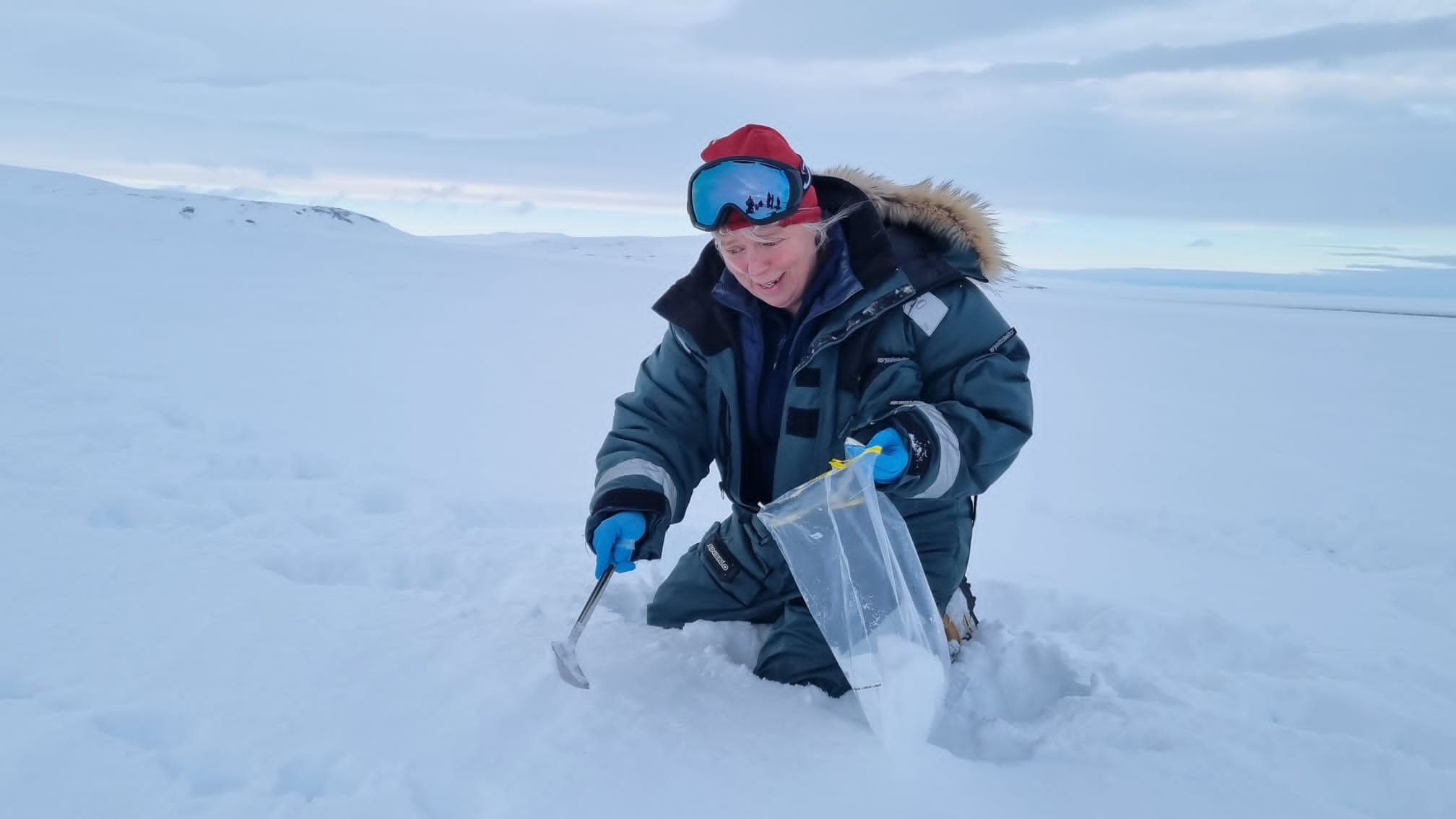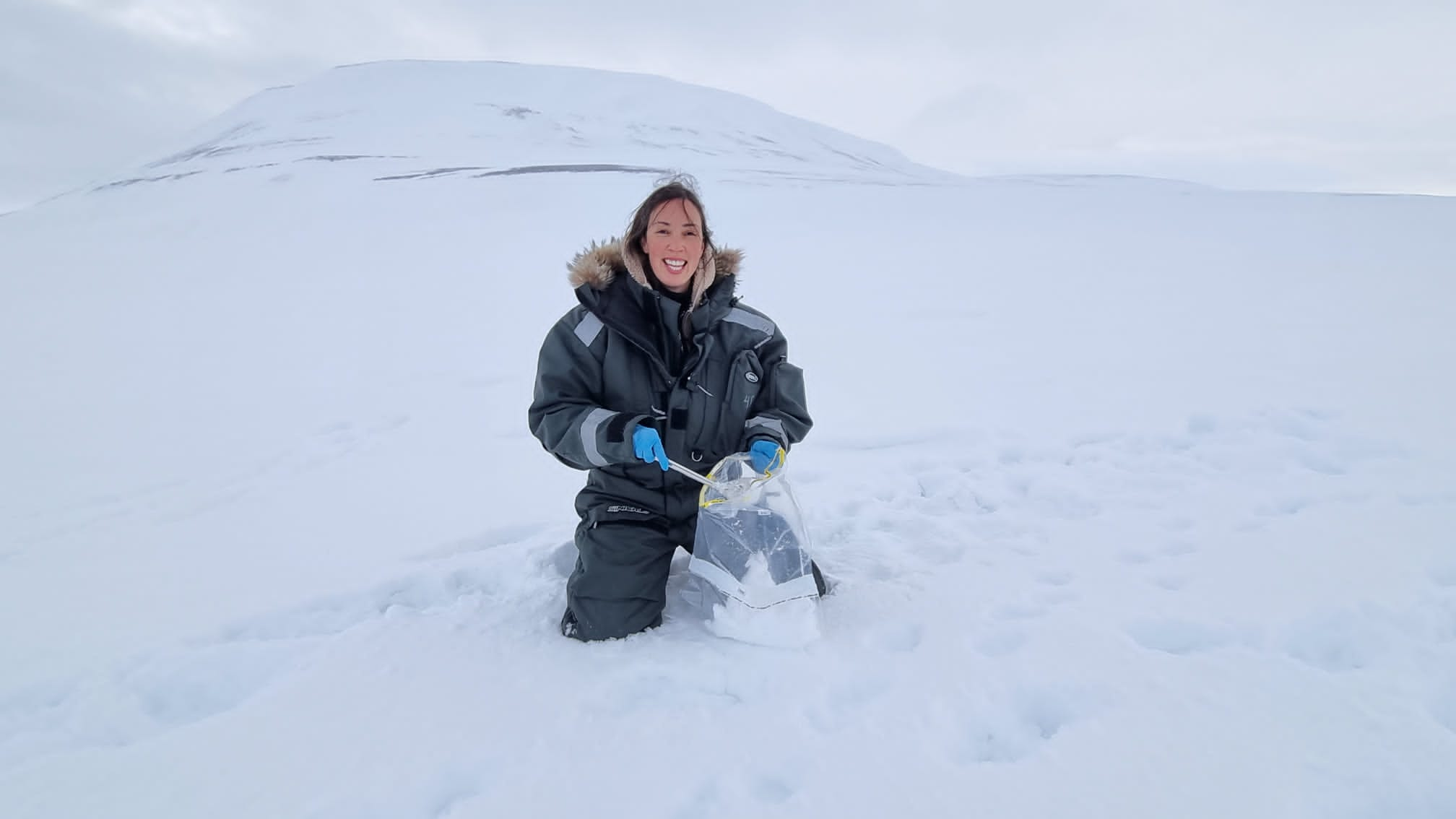Field Notes: Following polar bear footprints
Last year, Melanie Lancaster, WWF Global Arctic Programme species expert, and Micaela Hellström, founder of MIX Research, embarked on an expedition near Svalbard high in the Arctic.
They joined researchers from Norwegian Polar Institute (NPI) in search of polar bears. Lancaster and Hellström’s expedition’s goal was to collect environmental DNA (eDNA) from polar bears to help us understand polar bear populations. Read on to see what they did and what they learned.

Melanie Lancaster
Here we are in the Arctic! Not long ago, Micaela and I boarded a Norwegian coast guard ship and voyaged around Svalbard, high in the Arctic. During this trip, our aim was to search for polar bears…as well as their footprints.
But, why polar bear footprints?

WHY POLAR BEAR FOOTPRINTS?
Micaela Hellström
Everyone leaves traces of themselves in their environment. Even miniscule traces, like hair or dead skin cells, host a wealth of information about that individual. These traces left behind can be collected as environmental DNA, or eDNA.
You can think of researchers looking for eDNA as detectives. By collecting eDNA, researchers can identify individual bears and even start to build an understanding of entire communities. eDNA from footprints has been used to identify which animals between different species, but it had not yet been used to tell individual animals apart.
On this expedition, we searched for eDNA from the footprints of polar bears to help us develop a method to identify individual polar bears. The Arctic is a huge region and it can be easier to find footprints of polar bears than the bears themselves.
Also, collecting footprint samples doesn’t disturb the bears. These samples can help researchers by supplementing existing genetic databases: The method we developed to profile individual bears from their footprints helps us build a better picture of polar bear populations for their conservation and management.

SEARCHING FOR POLAR BEARS
Melanie Lancaster
Getting out to Svalbard is only part of the journey…then we actually need to find polar bears and their footprints.
We spent 10 days at sea and in the ice. There was almost 24 hours of daylight, which meant that together with the crew, we were able to watch for polar bears around the clock. We did this from the bridge – the top level of the ship – and from the ship’s deck.
Unfortunately and unusually, we didn’t manage to see any polar bears from the ship, but we were lucky enough to see gorgeous Arctic scenery, several walrus and bearded seals basking on the sea ice, and many thousands of seabirds that were preparing for the summer breeding season.
We did, however, find polar bear footprints.
They were on a small Arctic island called Hopen, near a Norwegian meteorological station.

THE EDNA METHOD
Micaela Hellström
To isolate the eDNA from the footprint, we first collect the footprint, using specially cleaned and sterilised equipment. At the same time, we recorded information about weather conditions, location and the footprint. Afterwards, we take the snow back to the lab, melt it and run the liquid through a filter, which captures the eDNA. We set up a mobile laboratory on the ship where we were able to do process the samples. The eDNA is then stored in the filters until we get back to shore, where we examined it further.
This expedition helped us develop the method that can retrieve the genetic profile of that individual polar bear. This means that researchers can now build more detailed datasets and get insights into polar bear population numbers, trends over time, movement of bears and genetic exchange between areas, behaviour, health and resilience to climate change.

CONSERVATION TOOL
Melanie Lancaster
From this expedition, WWF and MIX Research were able to eDNA from polar bears that will allow us to identify individuals. This method was also tested on other large carnivores, lynx and snow leopards, and the researchers were successfully able to identify individuals from these animals as well. You can read more about the scientific method in the journal Frontiers in Conservation Science.
Another good thing about this new method is that non-scientists like hunters, trackers, and Indigenous and local community members will be able to be trained participate in snow collection. This eDNA method from footprints unlocks new opportunities for monitoring polar bear populations and adds to our toolkit for species conservation and management.
This article originally ran on WWF Arctic.

